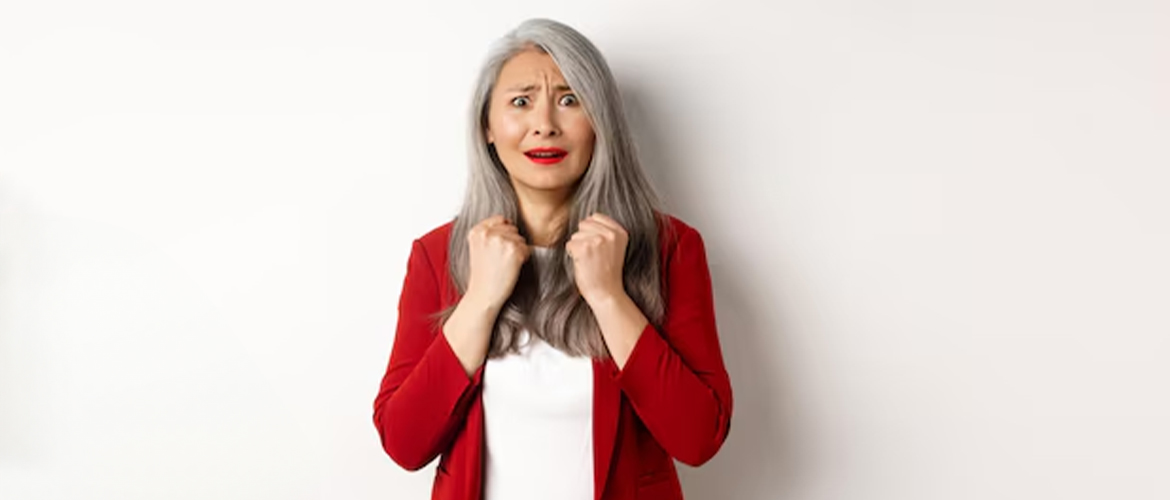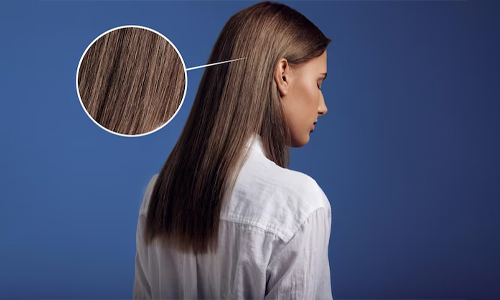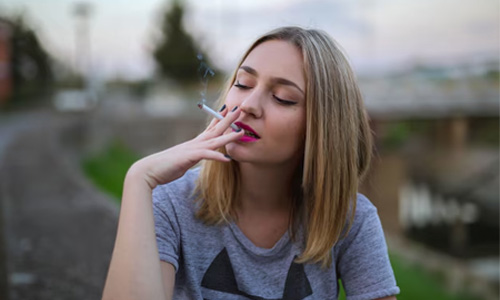

It was a typical Saturday afternoon, and a group of friends—Mia, Lily, Jake, and Sophia—were catching up at their favorite coffee shop. The conversation started with the usual chit-chat but quickly took an interesting turn when Mia, who had recently noticed a few grey strands in her hair, sighed and asked, “Guys, what causes grey hair? I feel like I’m way too young for this!”


Jake, always the science geek, jumped in. “Well, Mia, it all comes down to melanin. That’s the pigment responsible for the color of your hair. As we age, the cells that produce melanin—called melanocytes—start to wear out. So, less melanin means less color, and that’s when you start seeing grey or white hairs.”
Sophia nodded in agreement. “And it’s not just about aging. Sometimes, grey hair can pop up due to other reasons too.”


Lily, who had done a bit of research on the topic, chimed in. “Yup, genetics plays a huge role. If your parents or grandparents went grey early, you probably will too. But lifestyle choices like smoking, stress, and a poor diet can speed up the process. Plus, environmental factors like pollution and UV exposure can also cause greying.”
Mia looked concerned. “So, it’s not just about getting older?”
Sophia replied, “Not necessarily. Health conditions like thyroid issues or vitamin deficiencies can also lead to premature greying. Even hormonal changes can play a part.”
Jake leaned forward, intrigued. “So, what’s the deal with people in their 20s going grey? I mean, we’re all pretty young.”
Lily explained, “It’s not that uncommon. Stress is a big one, but so is your genetic makeup. Some people are just predisposed to greying earlier. And let’s not forget the psychological impact—it’s tough for someone in their 20s to deal with grey hair when it’s usually associated with aging.”
Mia looked hopeful. “But is there any way to reverse it?”
Sophia sighed. “That’s the million-dollar question, right? The truth is, once a hair turns grey, it’s pretty much irreversible. However, some studies suggest that reducing stress and improving your diet might help slow down the process. But it’s more about prevention than reversal.”
Lily, who loved experimenting with DIY beauty treatments, smiled. “Speaking of prevention, there are some natural remedies that might help.
Amla is a powerhouse of vitamin C and antioxidants, which can help in preventing and reversing premature greying. Applying amla oil directly to the scalp or consuming fresh amla juice regularly can nourish hair follicles and restore natural color.
Curry leaves are rich in antioxidants and iron, which help in preserving the pigment in hair. Boil a handful of curry leaves in coconut oil until they turn black, then strain the mixture. Massage this oil into your scalp regularly to help rejuvenate your hair color.
Since it is rich in tannins that can darken hair naturally, it is a wonderful remedy for grey hair. Brew a strong cup of black tea, let it cool, and use it as a final rinse after shampooing. This can help in adding a darker tint to grey hair over time.
Onion juice contains catalase, an enzyme that can help reduce hydrogen peroxide buildup on the scalp, which causes greying. Apply fresh onion juice to your scalp, leave it on for 30 minutes, and then wash it off. Regular use can help in restoring hair’s natural color.
Henna is a natural dye that can cover grey hair effectively. Mixing it with coffee can deepen the color. Prepare a paste of henna powder and brewed coffee, apply it to your hair, and leave it on for a few hours before rinsing it off. This can give your hair a rich, dark tint.
Ridge gourd is known to rejuvenate the natural pigmentation of hair. Soak dried pieces of ridge gourd in coconut oil for a few days, then boil the mixture until black residue forms. Apply this oil to your hair regularly to help reverse greying.
Sesame seeds, especially black sesame, are known to promote melanocyte activity, which can help in maintaining hair color. Mix black sesame seeds with coconut oil and apply it to your scalp. This remedy, used consistently, can help in darkening grey hair.
Almond oil is rich in vitamin E, which nourishes hair, while lemon juice provides vitamin C and brightens hair color. Mix equal parts of almond oil and lemon juice, massage it into your scalp, and leave it on for 30 minutes before washing your hair. This can help in reducing grey hair and promoting healthier hair growth.
Both rosemary and sage are known for their natural darkening properties. Boil these herbs in water, let the mixture cool, and use it as a hair rinse. Regular use can gradually darken grey hair and add shine.
Carrot seed oil is packed with beta-carotene and antioxidants that can help in reversing premature greying. Massage carrot seed oil mixed with a carrier oil like coconut or olive oil into your scalp regularly to help maintain your natural hair color.
These remedies can be used as part of a regular hair care routine to help slow down or even reverse the greying process. However, these remedies do not apply to factors such as genetics.
Jake chuckled. “Sounds like something I’d find in one of your DIY videos, Lily.”
Mia looked thoughtful. “So, what can we do to prevent it?”
Sophia listed some tips.
Ensure your diet is packed with essential vitamins and minerals like Vitamin B12, Vitamin D, copper, iron, and zinc. These nutrients are crucial for maintaining healthy hair pigmentation and can help delay the onset of grey hair.
Chronic stress is a significant factor in premature greying. Incorporate stress management techniques such as meditation, yoga, deep breathing exercises, or even regular exercise to keep stress levels in check.
Prolonged exposure to the sun’s UV rays can damage the melanin in your hair, leading to premature greying. Wear a hat or use hair products with UV protection when spending extended time outdoors.
Smoking not only affects your overall health but also accelerates the aging process, including the premature greying of hair. Quitting smoking can slow down the greying process and improve your hair’s overall health.
Frequent use of harsh hair dyes, chemical treatments, and styling products can damage your hair and contribute to early greying. Opt for natural or less damaging alternatives whenever possible.
A healthy scalp is essential for healthy hair. Regularly massage your scalp with oils like coconut or almond oil to improve blood circulation, nourish hair follicles, and promote healthy hair growth.
Antioxidants help fight oxidative stress, which is a known cause of premature aging and greying. Include antioxidant-rich foods like berries, nuts, and leafy greens in your diet, or consider taking antioxidant supplements.
Dehydration can lead to dry, brittle hair, which is more prone to damage and greying. Ensure you drink plenty of water throughout the day to keep your hair and scalp well-hydrated.
Thyroid imbalances can contribute to premature greying. If you notice an increase in grey hair, consider getting your thyroid levels checked and consult a healthcare professional if necessary.
Switch to shampoos and conditioners that are free of sulfates, parabens, and other harsh chemicals. Natural hair care products with ingredients like aloe vera, hibiscus, and amla can help maintain your hair’s natural color for longer.
Mia sighed, “I guess I should start taking better care of my hair now that it’s starting to grey.”
Lily nodded enthusiastically. “Grey hair is more prone to dryness and can be a bit coarser. You’ll need to switch to a gentler shampoo and conditioner. And don’t forget about moisturizing your hair—oils and serums can help keep it soft and shiny.”
Sophia added, “And avoid too much heat styling. It can make grey hair even more brittle.”
Jake, who had recently embraced his grey streaks, grinned. “But grey hair can look pretty cool, you know. I’ve started getting compliments since I stopped dyeing it. There are easy ways to style it so you still look youthful.”
Lily agreed. “Absolutely! You can embrace the grey and still look fashionable. It’s all about confidence. And with the right haircut and styling products, grey hair can make a statement.”
Mia then asked, “What if I decide I’m not ready to go fully grey yet? Should I dye it?”
Sophia smiled. “Your call! There are tons of options.
This is the most common option for completely covering grey hair. It penetrates the hair shaft, providing long-lasting results. Choose a shade that closely matches your natural hair color or opt for a bolder change.
It deposits color on the hair’s surface, providing a more gentle approach to coloring but it gradually fades with shampooing. This method is ideal for those who want to soften the appearance of grey hair without full coverage.
This method is the balance between permanent and semi-permanent. It penetrates the hair shaft but not as deeply as the permanent color. It offers good grey coverage and lasts longer than semi-permanent color but is not as permanent as full-coverage options.
Adding highlights or lowlights can create a natural-looking effect that blends grey hair with your natural color. The level of contrast between the highlights and lowlights can be adjusted to suit your preferences.
This involves applying color only to the new growth at the roots to maintain a fresh look.
A gradual transition from darker roots to lighter ends can help to camouflage grey hair.
Similar to ombre but with a more freehand and natural-looking application.
A seamless blend of multiple shades for a soft and dimensional effect.
Lily added, “And remember, if you do color your hair, you’ll need to give it some extra TLC to keep it healthy.”
Sophia, who was always on top of the latest beauty trends, said, “Speaking of products, there are some great ones out there specifically for grey hair. Look for shampoos with purple pigments to prevent yellowing. Oils like argan or jojoba are fantastic for keeping hair soft. And don’t forget about serums for added shine.”
Mia made a mental note to stock up on some new products. “Any specific brands you recommend?”
Lily replied, “There are so many! I’ll list some of them with good results and great customer experiences.
This shampoo is specifically formulated to neutralize yellow and brassy tones in grey and white hair. The star ingredient, centaury extract, naturally enhances the brightness and shine of grey hair. It’s gentle on the scalp, free from parabens and silicones, and helps maintain a cool, vibrant silver hue.
It is a cult-favorite treatment that works to repair damaged and brittle hair. It’s perfect for grey hair, which can be more prone to dryness and breakage. It strengthens and restores hair from within, making it softer, shinier, and more resilient. It’s also suitable for all hair types.
This shampoo is enriched with blue malva, which adds silvery brightness to grey hair while neutralizing brassy tones. It also contains coneflower, known for its soothing properties. It’s 100% vegan and cruelty-free, with a lovely natural fragrance, making it a great choice for those who prefer eco-friendly products.
This at-home gloss treatment is perfect for refreshing the look of your grey hair. It enhances shine, neutralizes brassiness, and leaves hair feeling soft and silky. It’s easy to use, delivers professional-quality results in just one step, and is free of harsh chemicals like ammonia and peroxide.
This versatile, nourishing oil is infused with antioxidant-rich argan oil and linseed extract to condition and add shine to grey hair. It’s ideal for taming dry frizzy hair and adding moisture. It’s lightweight, non-greasy, and can be used on both damp and dry hair. It’s also perfect for adding a bit of gloss and softness to grey hair.
Jake, who was always ahead of the curve, said, “And don’t forget, grey hair is a big trend for 2024. Silver, platinum, and even pastel shades are really in right now. It’s not just about covering up the grey—people are embracing it.”
Sophia nodded. “It’s true! The ‘silver fox’ look is super stylish. And with the right cut and color, you can rock the grey.”
As the conversation wound down, Mia smiled, feeling a bit more reassured. “You guys have made me see grey hair in a new light. It’s not just a sign of aging—it can be a sign of style too.”
Sophia, always the voice of reason, concluded, “Exactly. Grey hair is just another part of who you are. Whether you choose to embrace it or cover it up, the most important thing is to take care of yourself and feel confident in your skin. After all, What Causes Grey Hair is a complex mix of genetics and other factors, and it’s a natural part of the aging process.”
And with that, the friends finished their coffee, leaving the café with a renewed sense of confidence and a lot more knowledge about grey hair.
Growing age is a very crucial age, especially for girls. Their bodies undergo various changes…
What is Migraine? Migraine is a neurological disorder where the patient experiences a severe headache…
Pregnancy brings a lot of physical and mental changes in women. Traveling during the gestational…
Apple cider vinegar is one of the most popular ingredients for DIY face washers, toners,…
Who said staying fit has to be boring? Sure, we all know the benefits of…
Are you eating enough potassium? Minerals, fats, vitamins, carbohydrates and proteins are important for proper…